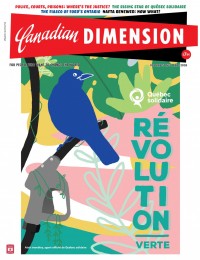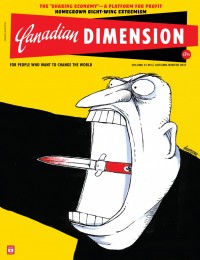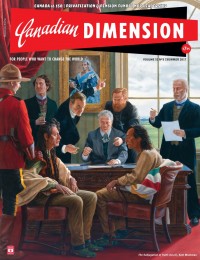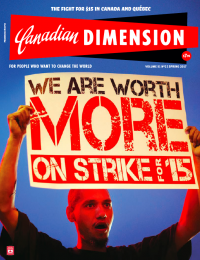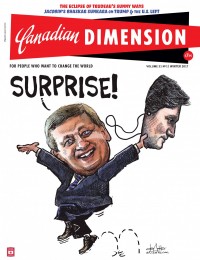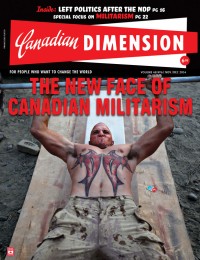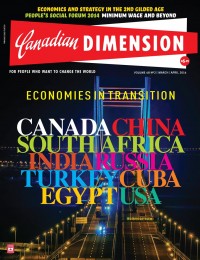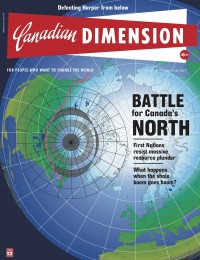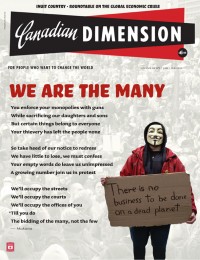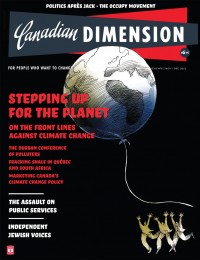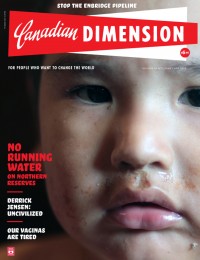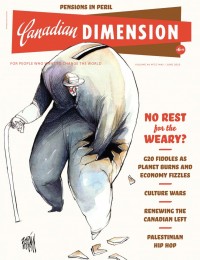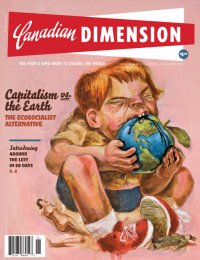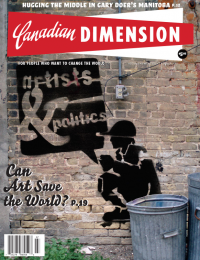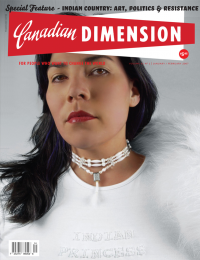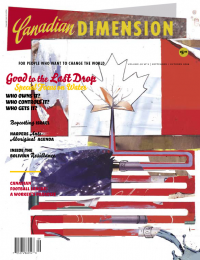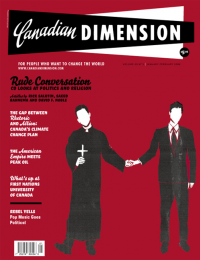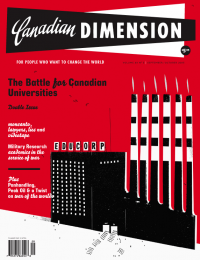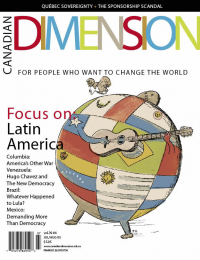Whose Bread You Eat, His Song You Sing
Why Doctors and Researchers Should Take a Pass on Drug Industry Money

Illustration by Ben Clarkson
The sad fact is that virtually all of modern medicine floats on a sea of drug company money. So when your doctor pulls out her prescription pad, chances are high that the doctor’s decision to prescribe a particular medication will have been influenced by industry-sponsored clinical trials, published in industry-funded medical journals and extolled at industry-funded continuing medical education events. The doctor’s lunch, and that of her entire staff, may have been purchased by a friendly drug company rep. Even the pen the doctor uses to write the prescription and the pad on which she writes will have drug company logos on them. Her children will play with drug company donated Frisbees and her husband will golf with drug company monogrammed golf balls.
Independent Education or ‘Peer-to-Peer’ Marketing?
Department chairs and star pharmaceutical researchers are sometimes referred to by the drug industry as key opinion leaders [or KOLs, for short]. These KOLs are courted assiduously. That’s because doctors respond best to other doctors – especially to those who hold prestigious academic positions. That’s why industry courts the medical elite with offers of consultancies, speaker’s fees and corporate directorships. These medical leaders, in turn, speak to their colleagues and write articles extolling the companies’ products. Benefits of the newest and most expensive drugs are hyped shamelessly; adverse side effects are ignored or downplayed.
Here’s an example of how fraudulent drug marketing works. Warner Lambert, a division of Pfizer, used a prominent academic physician to promote Neurontin for unapproved uses. The drug was approved as a treatment for epilepsy but it was heavily promoted for a dozen off-label uses – uses for which it had not been approved and for which there was no good supporting evidence. These uses included: depression, pain relief, and bipolar disorder. Pfizer eventually pleaded guilty in 2004 to two felony counts and agreed to pay $430 million in criminal fines and civil penalties. It sounds like a severe penalty but, since the company’s profits from this criminal activity were well in excess of $2 billion, they were laughing all the way to the bank. Neurontin’s side effects, by the way, included depression and suicidal thoughts, so the patients to whom it was prescribed may not have been laughing as heartily as the company. Pfizer signed an agreement not to engage in such fraudulent and unethical practices again but, as was later discovered, it was soon up to its old tricks.
What Pfizer did next was to promote the arthritis drug Bextra for treatment of acute pain of all kinds. As with its promotion of Neurontin, this was illegal and unethical. For this repeat criminal offence the company was eventually fined $1.19 billion dollars – the largest criminal fine in U.S. history. But before Bextra was pulled from the market by the FDA the company made a fortune from the millions of prescriptions written by tens of thousands of doctors influenced by their most highly respected colleagues, the KOLs. In short, the fines are serving as a kind of licence fee which the companies pay in order to promote their drugs for off-label (i.e., unapproved) uses to doctors. The importance of physician-to-physician marketing as a promotional strategy cannot be underestimated. It works. It creates a brilliant bottom line for Big Pharma.
To give you some idea of the sums of money involved, Parke-Davis, another branch of Pfizer, identified forty potential “thought leaders” in one U.S. region, more than half of whom were current or future university departmental chairs, vice-chairs or directors of academic clinical programmes. Thirty-five of these forty ‘thought leaders’ participated in Parke- Davis-sponsored activities, and fourteen of them received honoraria, research grants or educational grants from the company (US$10,000 to $158, 250 per “thought leader”).
It can be very flattering as well as lucrative to be recognised as a local, national or international expert or ‘rising star’ in one’s field, and to be invited onto advisory boards and speakers’ bureaus. Clinicians justify this work as a favourable reflection on their expertise and the superior quality of their own opinions. Nevertheless, they are part of a marketing plan whose effectiveness largely depends on message delivery by a seemingly neutral clinical expert.
The companies also provide substantial amounts of money to subsidise continuing medical education (CME), professional conferences, and professional journals. Since many jurisdictions require that doctors undertake postgraduate education as a condition of keeping their license, regular attendance at CME meetings is an integral part of doctors’ lives. Over sixty percent of the cost of CME in the U.S. is paid for by the pharmaceutical and medical device industry. The situation in Canada is similar. In 2006, these industries spent US$1.45 billion on accredited CME.
Can industry funding bias research results?
Most Canadian medical researchers, like their American colleagues, receive large amounts of funding from the industry whose products they test.
One of the most influential studies of how researchers’ objectivity might be compromised by drug industry sponsorship appeared in the New England Journal of Medicine in January 1998. Researchers set out to examine published articles on the safety of calcium channel antagonists — a class of drugs is used to treat high blood pressure. Their goal was to answer the question: to what extent is there an association between industry support of medical research and the research findings of investigators? Authors were divided according to their relationships with pharmaceutical companies and then, independently, their research findings on the drug’s safety were classified as “supportive,” “critical,” or “neutral.” The conclusion this article reached: “Our results demonstrate a strong association between authors’ published positions on the safety of calcium channel antagonists and their financial relationships with pharmaceutical manufacturers.”
It may be worth spelling out just how influential drug company sponsorship appears to have been: ninety-six percent of the researchers funded by industry found that their sponsor’s products were safe; when research funding was industry-independent the rate of positive findings dropped to thirty-seven percent. That’s some difference. One is irresistibly drawn to that old proverb: Whose bread you eat, his song you sing.
More recently (2007), another group of researchers examined the influence of funding sources on methods and outcomes for 192 studies of statins. This class of drugs is used to lower cholesterol levels. Studies funded by the manufacturer of the test drug were twenty times more likely to report results favourable to the test drug than studies funded by the manufacturer of the comparator drug. So much for that much-vaunted scientific “objectivity.”
Dr. Joel Lexchin, a Canadian physician and drug researcher from York University carried out another of the important studies examining the relationship between industry funding and research results. Lexchin found that studies funded by the industry were four times more likely to report outcomes favourable to the industry compared to non-industry funded research.
Ghost Authorship
A related problem is that of “ghost” and “guest” authorship on clinical trial reports. A “ghost” author is someone who writes a scientific report, usually a company employee or a contract medical writer – but the ghost is not actually listed as an author. Instead, the names appearing on the published research will be those of famous academic clinicians, thereby lending “weight and credibility” to what is really marketing rather than science. Ghost authorship violates principles of accountability and responsibility. It represents a form of academic plagiarism and should be seen as outright scientific fraud.
How do we know that much of the medical literature is in fact the product of corporate ghost writing? A number of U.S. court cases have revealed internal company documents listing trial reports with authors “to be determined.” For example, a contract medical writing company, Current Medical Directions, was responsible for management of eighty-five papers on Pfizer’s antidepressant, Zoloft. Fifty-five of these resulted in published reports. Unsurprisingly, given the funding source, all of the published reports were favourable to Pfizer’s product. Well-known psychiatrist and researcher Dr. David Healy, estimates that half of the psychiatric literature is ghost written. These ghosted articles appear in prominent psychiatric journals under the names of eminent psychiatrists – but the listed authors are merely paid stooges for the drug company whose employees or hirelings have really written the article.
Medical research can be very expensive and some people believe that taxpayers save a lot of money when that research is funded by the drug industry. But the real cost of a privatized system of research funding – both the financial cost and cost in terms of public health – is much higher than if governments were simply to give the money to independent granting agencies and let the granting agencies allocate the funds to the scientific community. That’s how we used to fund research before the era of corporate “partnerships.” If we want public science in the public interest it’s going to have to be paid for with public funds. That need not mean higher taxes for ordinary citizens, however, since the money for medical research can come from licensing drugs to the companies that will manufacture them. Ultimately, the financial savings will be huge and, at the same time, public health will be much improved.
Author’s postscript: The Government of Canada has just announced the appointment of Pfizer Canada Vice-President and Medical Director, Dr. Bernard Prigent, to the Governing Council of the Canadian Institutes of Health Research. This is the body that sets health research policy for our country. Go figure.
This article appeared in the January/February 2010 issue of Canadian Dimension (Our Winnipeg).







